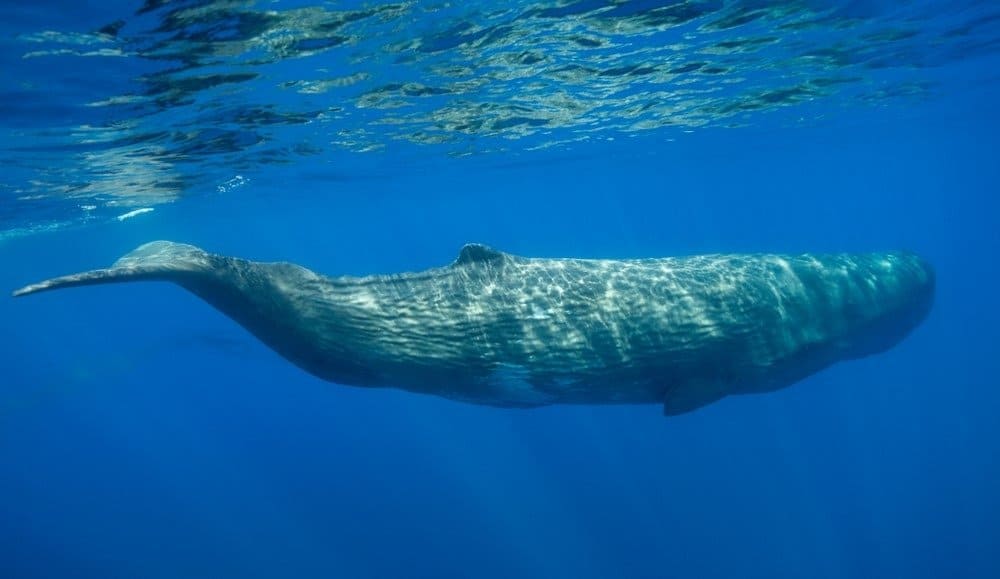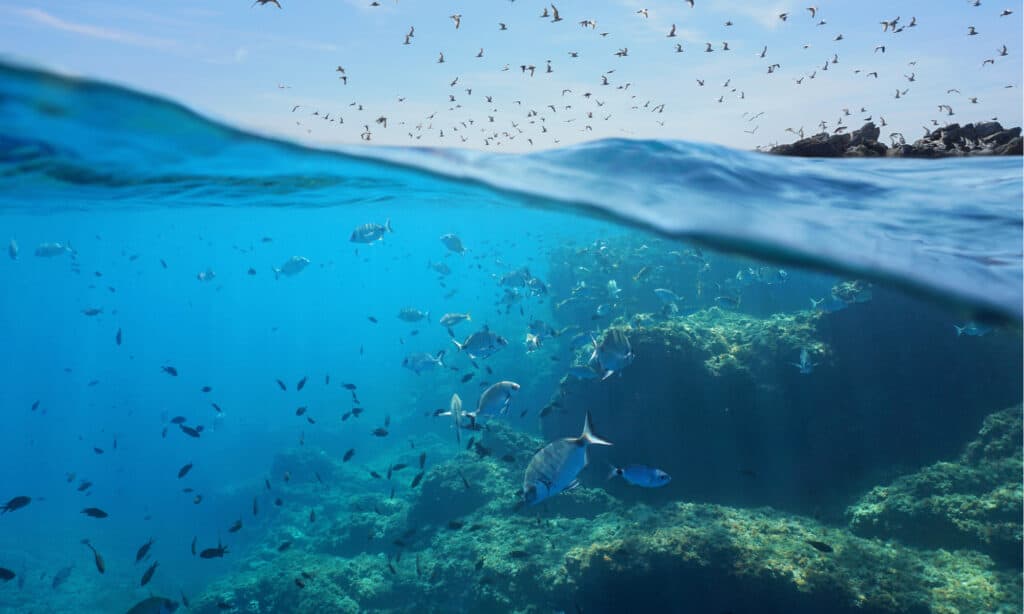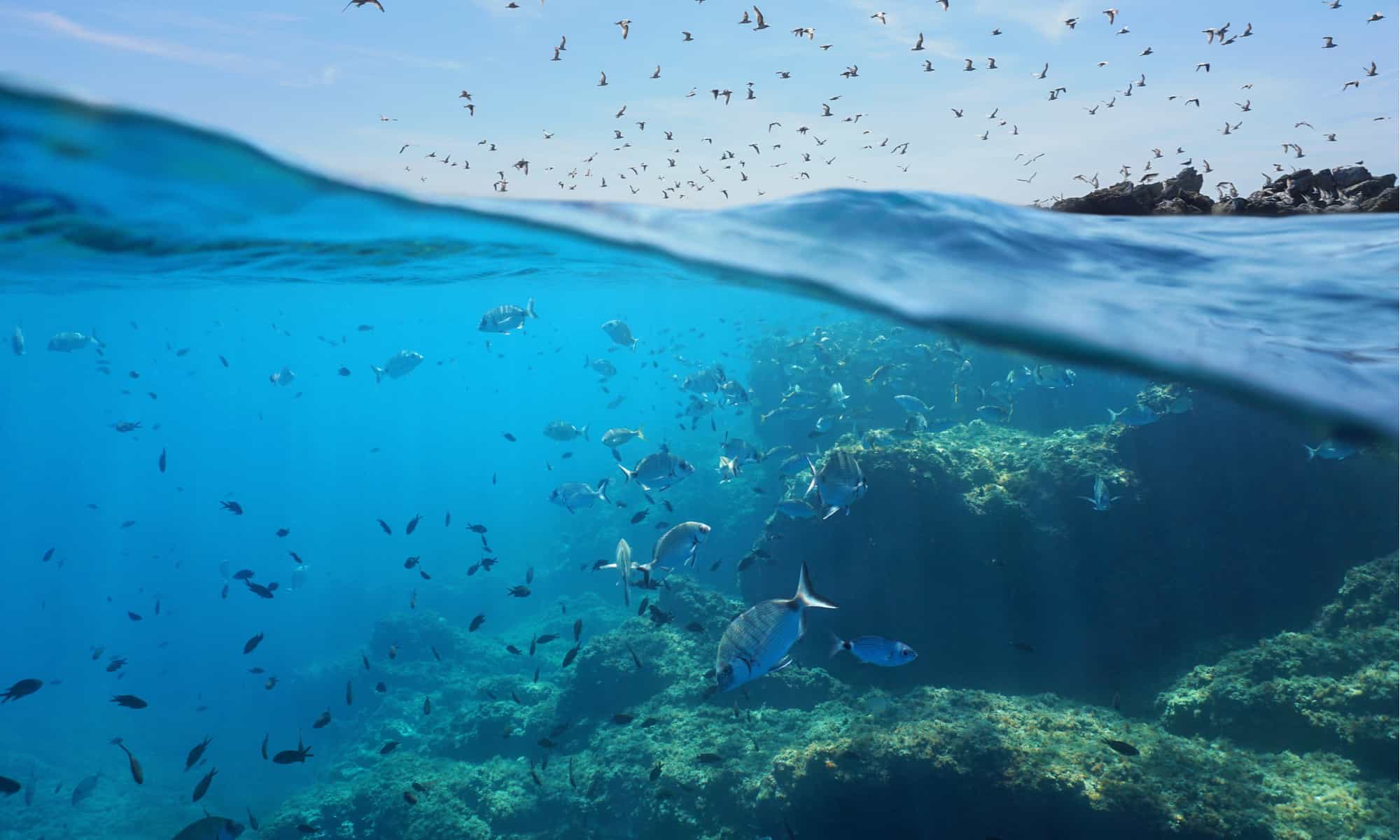Twenty-two countries border the Mediterranean Sea. In this sea, there are at least 3,000 islands and thousands more aquatic creatures, which makes us wonder how deep the Mediterranean Sea is. The Mediterranean Sea has an area of 965,300 square miles and is larger than the Black Sea and the Aegean Sea combined.
Are you ready to discover how deep the Mediterranean Sea really is and fun facts about its deep waters? Keep on reading!
Where is the Deepest Part of the Mediterranean Sea?

The deepest part of the Mediterranean Sea is the Calypso Deep.
©imagIN.gr photography/Shutterstock.com
The average depth of the Mediterranean Sea is 4,920 feet, and yet this number looks so small compared to the deepest point! The deepest part of the Mediterranean Sea is the Calypso Deep, which is located in the Hellenic Trench, Ionian Sea. It is near Pylos, Greece, and it has an estimated maximum depth of 17,280 feet.
The Hellenic Trench, which is home to various unique habitats, connects the Central and Eastern Mediterranean. It is a deep trench with a very steep slope that falls between 200 to 2000 meters. The Hellenic Trench is important for sperm whales and Cuvier’s beaked whales since these two large creatures feed in the deep waters.
Two explorers nearly 60 years apart from each other once reached the bottom of the Mediterranean Sea, clocking in the Calypso Deep at a depth of 16,762 feet. First, on 27 September 1965, Captain Gérard Huet de Froberville, Dr. Charles “Chuck” L. Drake, and Henri Germain Delauze descended into Calypso Deep and reported that the area was 16,770 feet deep. In 2020, Victor Vescovo dove into the Calypso Deep using the DSV Limiting Factor and reached the bottom of the deep, measuring it at 16,762 feet.
What Animals Live in the Mediterranean Sea?

At least 8 species of large whales and dolphins call the Mediterranean Sea home.
©wildestanimal/Shutterstock.com
So far, about 17,000 species have been reported to live in the Mediterranean Sea. This is about 4 to 18% of all marine life. More notably, at least 8 species of large whales and dolphins and another 80 species of sharks and rays call the Mediterranean Sea home. With how diverse the Mediterranean Sea is, it is no wonder there are so many unique types of fish.
For example, in the Mediterranean Sea, you can find rainbow wrasse, which is a beautiful and shiny reef fish that only grow up to 25 centimeters. The Mediterranean swordfish is iconic, with its large and pointy ‘sword’ growing out of its head. We can’t discuss animals in the Mediterranean Sea without mentioning the ocean sunfish. This unique fish is odd-looking and large, reaching 2,200 pounds. It spends a lot of time basking in the sun close to the surface of the water. When it reaches the surface of the water, its large triangle fins are often mistaken for a shark.
Why is the Mediterranean Sea So Clear?
Sadly, the Mediterranean Sea is one of the most polluted seas in the world, but in many parts, it is crystal clear. The Mediterranean Sea is known for its exquisite beaches and crystal-clear waters. If you have ever swum on a Mediterranean island, you may have noticed you can see your feet clearly while swimming in the water. This is because there is a lack of nutrients, nitrates, and ammonia in the water, which, when mixed with CO2 and light, create a green and murky appearance. Interestingly, a lack of algae and nutrients forms the perfect conditions for picturesque, clear water.
Which Countries Touch the Mediterranean Sea?

Many countries use the Mediterranean Sea as a source of food and travel.
©Damsea/Shutterstock.com
At least 22 countries touch the Mediterranean Sea and use it as a source of food and travel. Some notable countries that border the Mediterranean Sea are Bosnia, Croatia, Morrocco, Egypt, Spain, and France. Historically, the Mediterranean Sea has always been an important space for global trade and travel since it connects multiple continents. The abundance of fish and food also feeds local communities. Now, most Mediterranean countries bordering the sea make money from tourism, including Greece and Italy.
Fun Facts About the Mediterranean Sea
- While some people consider the Mediterranean Sea as part of the Atlantic Ocean, it is often referred to as a separate body of water.
- The Zanclean flood may have filled up the Mediterranean Sea in two years about 5.3 million years ago.
- Overfishing in the Mediterranean Sea has caused the fish population to dwindle in fish stocks.
- The Mediterranean Sea is very salty because of a lack of evaporation compared to the Atlantic Ocean.
- The sea is also heavily polluted because of spills from large ships and sewage. The toxins in the sea include marine debris, lead, mercury, and mineral oil.
- The Strait of Gibraltar connects the Mediterranean Sea and the Atlantic Ocean through a narrow 8.7-mile-wide opening.
- Mediterranean means ‘in the middle of land’ in Latin.
Where is the Mediterranean Sea Located on a Map?
The Mediterranean Sea is a body of water that links to the Atlantic Ocean and is predominantly bordered by land, encompassed by the Mediterranean Basin. It is surrounded by Southern Europe and Anatolia to the north, North Africa to the south, and the Levant in Western Asia to the east.
Here is the Mediterranean Sea on a map:
Thank you for reading! Have some feedback for us? Contact the AZ Animals editorial team.








